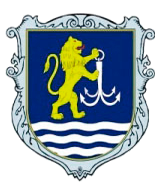РОЗРАХУНОК ПАРАМЕТРІВ ОСТІЙНОСТІ ОДНОЯРУСНОГО КОНТЕЙНЕРНОГО ХАУСБОТУ
Abstract
Introduction. Due to the increasing popularity of the construction of houseboats (houseboats), there is a need to develop methods to ensure their safe operation. Houseboats, according to the classification of the Register of Shipping of Ukraine, are stoic vessels even in the presence of a power plant. For trouble-free operation of such floating structures, it is necessary to ensure stability, given their low draft at relatively high vitality and, as a rule, insufficient reliability of anchor and/or mooring devices. The aim of the research is to obtain mathematical dependences for determining the stability parameters (center of buoyancy, transverse and longitudinal metacenters for a three-float pontoon of a self-propelled houseboat). Analysis of recent research and publications. The theoretical basis is scientific work in the field of design and construction of houseboats, landing stages, pontoons, regulatory framework of the Register of Shipping of Ukraine, as well as research on modular formation and design and technological solutions of floating and shore structures. Research methods. Two basic methods of ship theory have been used to calculate static stability: tilting and rotating relative to a fixed axis. The method of equal-volume inclination involves the conduct of auxiliary waterlines, which approximately cut off the constant volume of the underwater part of the pontoon. The disadvantage of this method is the need for duplicate calculations for the current and auxiliary waterline, which leads to the possibility of accumulating errors. Resume. Methodical recommendations for calculating the stability of houseboats on the example of a single-tier container houseboat have been developed. The proposed mathematical dependences and graphical explanations to them allow to determine the parameters of the Reed diagram for different sizes of the pontoon, its draft and values of load articles with a minimum amount of initial data.





